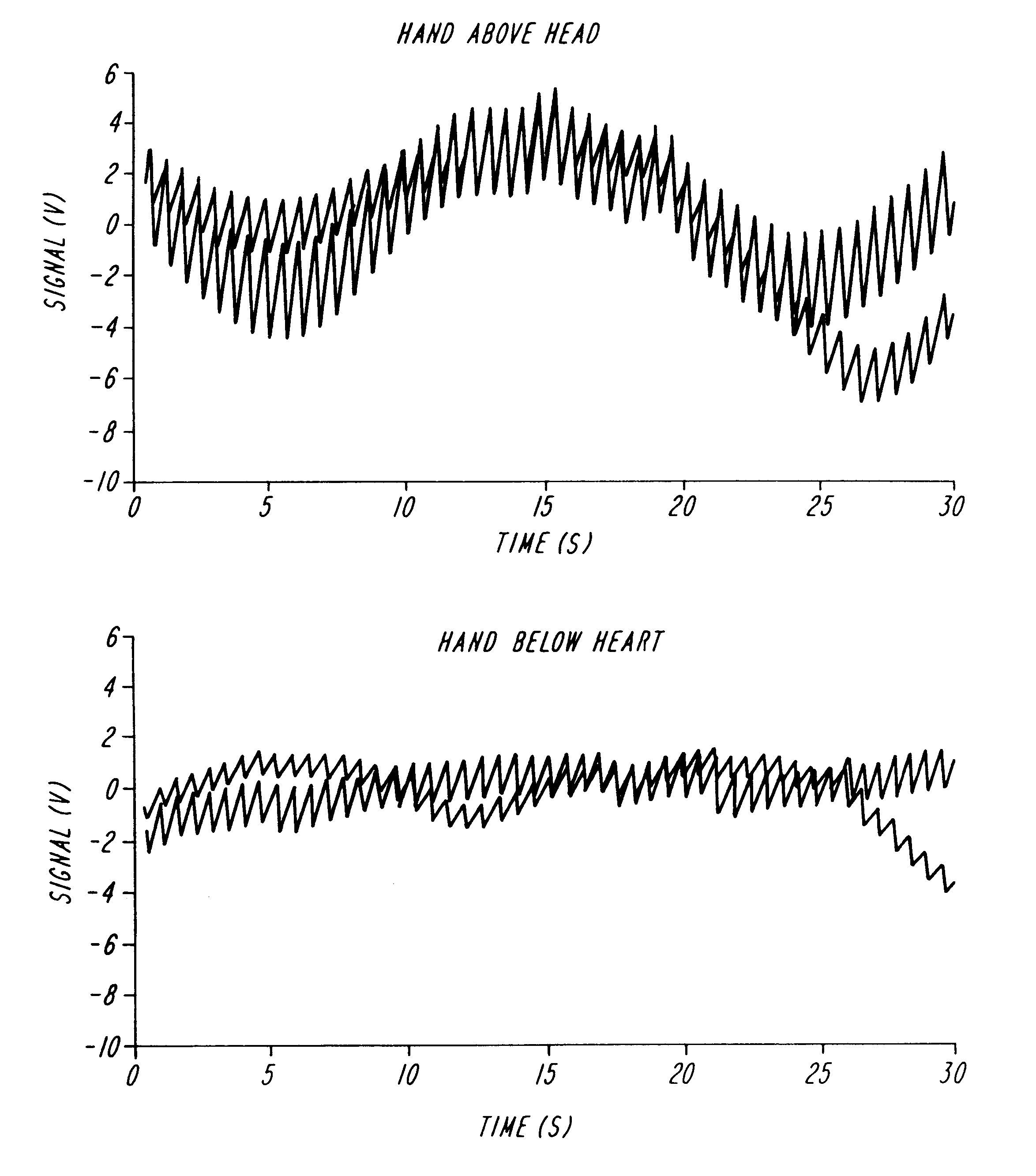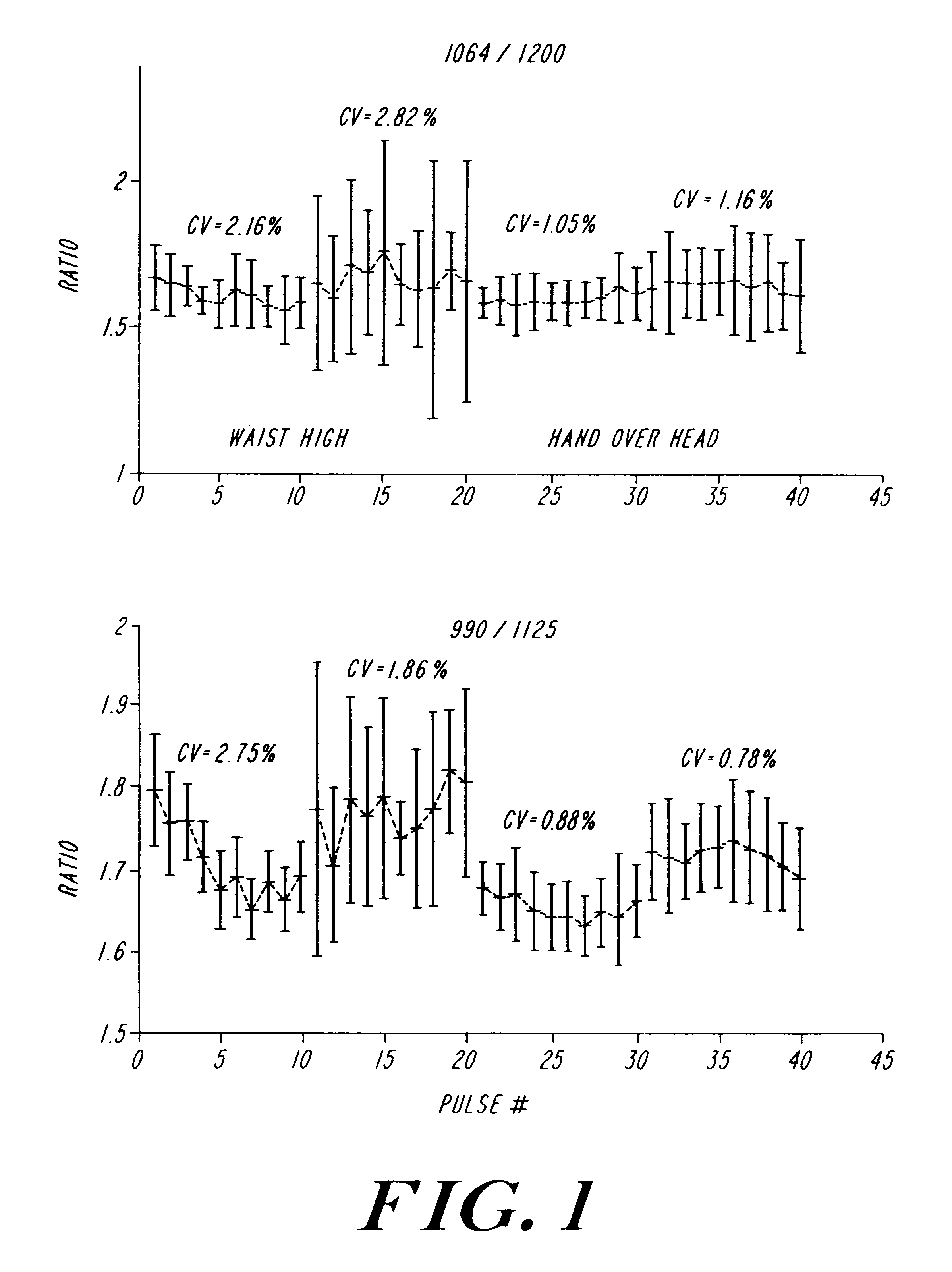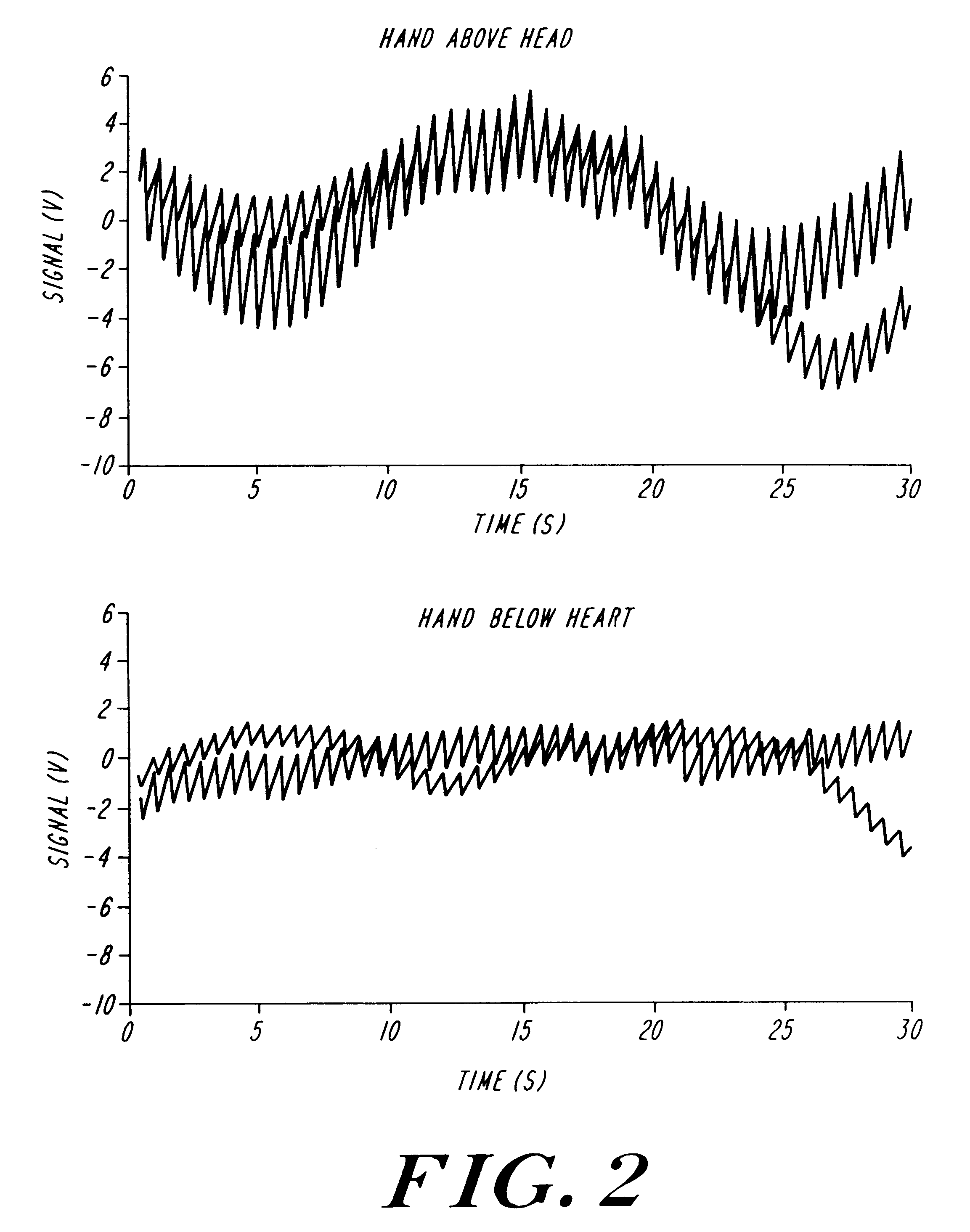Method of improving reproducibility of non-invasive measurements
a non-invasive measurement and reproducibility technology, applied in the field of non-invasive measurement reproducibility improvement, can solve the problems of reproducibility problems of run-to-run results, and even inconsistency between the data within the run, and improve the accuracy of the measurement. the effect of reproducibility
- Summary
- Abstract
- Description
- Claims
- Application Information
AI Technical Summary
Benefits of technology
Problems solved by technology
Method used
Image
Examples
example 2
In this example, a different experimental setup was used. A Nellcor pulse oximeter was used to supply the illumination and detection system but the analog signals from Nellcor detectors were routed to a separate data acquisition system, one similar to that used in Example 1. The index finger of the left hand was used in the pulse oximeter sample chamber. This configuration permits the measurement of pulse oximetry data using a data acquisition system with higher fidelity than that of the commercial device.
The finger was illuminated and the transmitted light collected by the Nellcor apparatus. This generated an output voltage from the photoelectric cell in the Nellcor device. Voltage was measured for 30 seconds using this setup. FIG. 2 illustrates the output signal, in volts, for signal collected from with this experimental setup with the hand above the head (upper graph) and the hand below the heart at approximately waist height (lower graph). As can be seen from this data, the sign...
PUM
 Login to View More
Login to View More Abstract
Description
Claims
Application Information
 Login to View More
Login to View More - R&D
- Intellectual Property
- Life Sciences
- Materials
- Tech Scout
- Unparalleled Data Quality
- Higher Quality Content
- 60% Fewer Hallucinations
Browse by: Latest US Patents, China's latest patents, Technical Efficacy Thesaurus, Application Domain, Technology Topic, Popular Technical Reports.
© 2025 PatSnap. All rights reserved.Legal|Privacy policy|Modern Slavery Act Transparency Statement|Sitemap|About US| Contact US: help@patsnap.com



